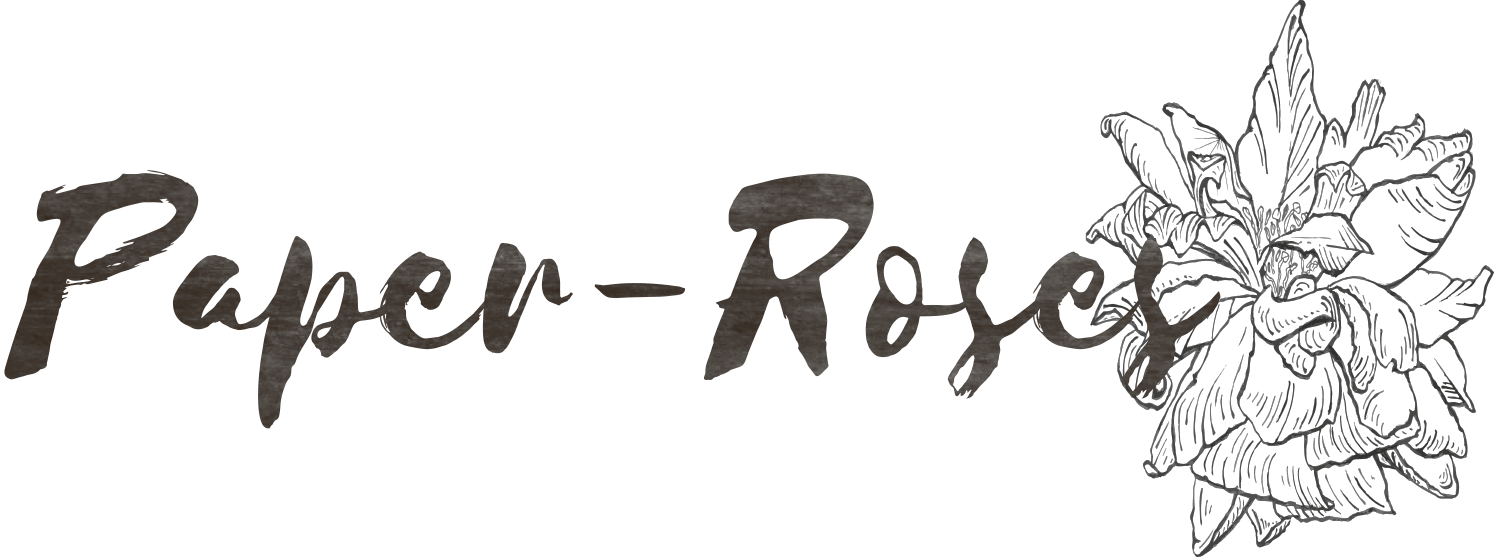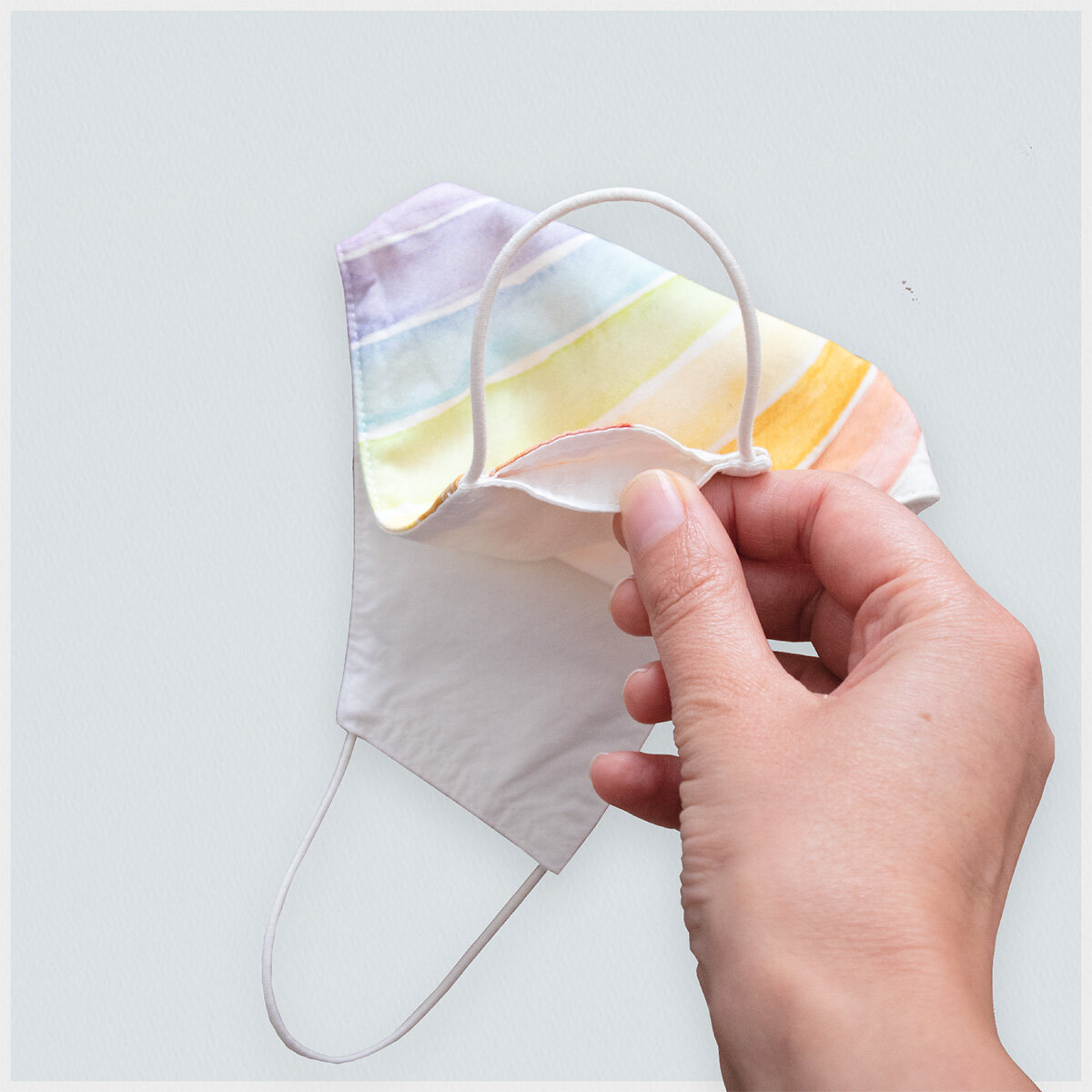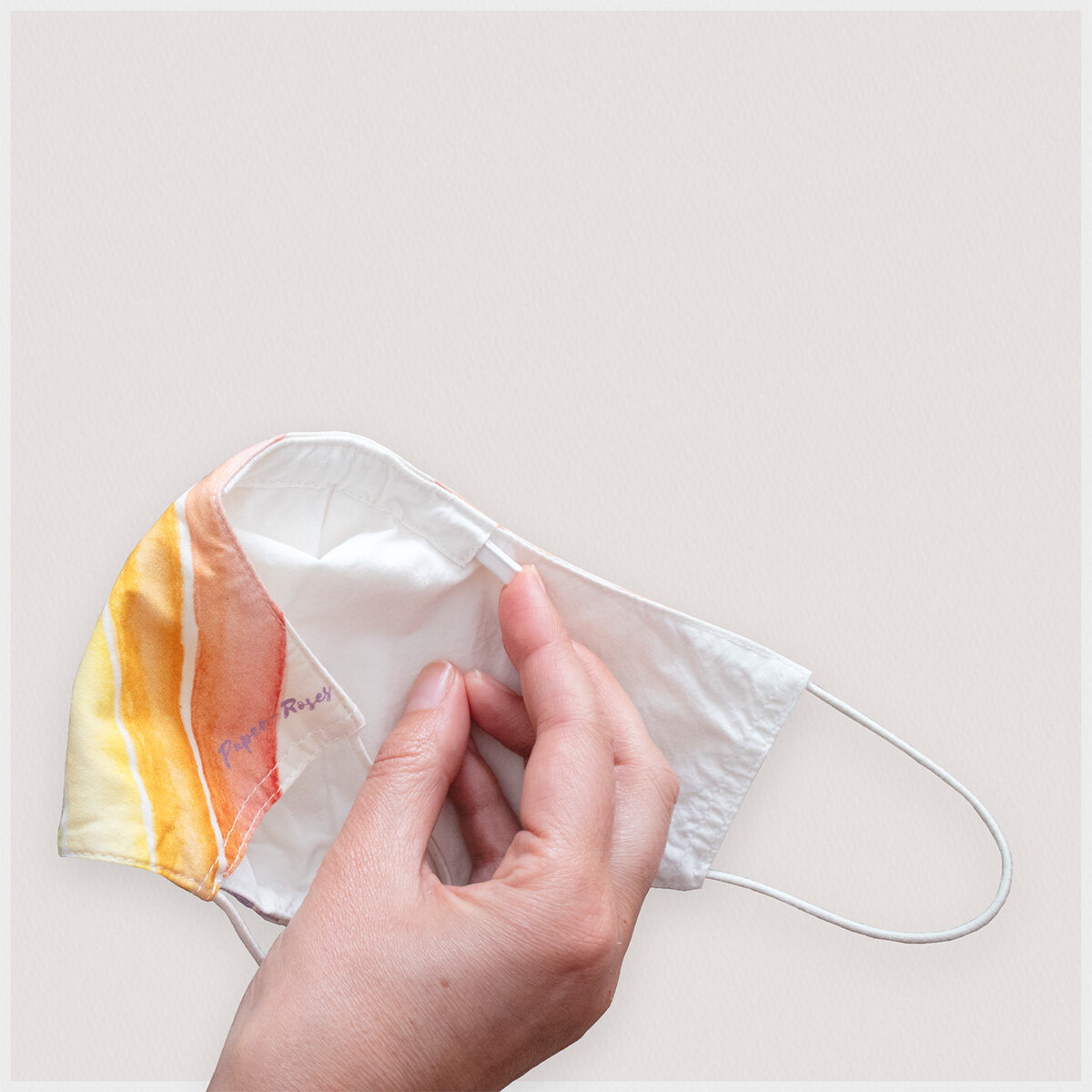What's behind the mask?
I’ve been waiting very patiently to make this exciting announcement…can you guess? Paper-Roses’ GOTS certified 100% organic cotton (with a little bit of natural rubber in the elastic) face masks are now available!
Just after Chinese New Year 2020 I had to spend a day in hospital. Nothing to worry about - just a minor op - so I’d be in and out in about 12 hours. But, it was a little bit different to any other stay in hospital I’ve had. Why? Because it was just days after the first COVID19 case was recorded in Hong Kong so everyone had to put on a surgical mask before they were allowed through the door of the hospital. Fair enough. Fully understood and definitely not a problem.
But actually it was…by the end of the day my face was covered in bright red welts and I sounded like I was having an asthma attack! OK, so I’m allergic to surgical masks…who knew? At this point, I’m not sure any of us realised how big a part of our lives face masks would become, but I knew that I’d definitely need to wear some form of face covering for a while to come…so what to do about it?
Well, let’s just say, I didn’t go straight into design and production mode. I did my research and found some reusable fabric masks online which I duly bought and wore whenever I went out. But, they really weren’t very comfortable because they just didn’t fit very well. To start with I thought it must just be me and my weirdly skinny head. But I’m definitely not alone. Anybody recognise the sore bottom eyelids that come from masks that aren’t shaped around the nose and eyes? Or perhaps the big gaps at the sides or top that definitely make it easier to breath but kind of defeat the purpose of wearing the mask. And then there’s the constant adjusting and fidgeting that comes with masks that wiggle up and down every time you open your mouth because they’re too short and don’t tuck neatly over your nose and chin…
From first thoughts to fruition
This, and the realisation that masks are going to be part of our lives for quite a while to come, is what eventually took me on the Paper-Roses face mask journey. And boy, what a journey it’s been! First there was the pattern…yes, I’ve developed patterns before, but let’s face it, all of my other fabric items are pretty much made up of straight lines, so the patterns were really easy to create. This was different - because of all the fit problems I’ve experienced with other masks, I wanted to create something that contours nicely to the face…and to do that without having a seam down the front (the idea of a seam right in front of your nose and mouth seems rather counterintuitive to me). Let’s just say, the whole process involved a lot of trial and error, progressing through paper patterns and some (very dodgy) hand-stitched masks before engaging Mrs Paper-Roses Senior (AKA my mum) to whip up a couple of initial samples on her trusty Singer sewing machine.
And then, once I had the basic shape sorted there were a whole load of decisions to make:
How many different sizes did I need and how many different print designs (I didn’t know it when I started, but these two things are closely linked)?
It turns out my head and face are pretty much the same size as my 12 year old nephew’s, quite a bit narrower than a friend’s 18 year old daughter’s, ridiculously small compared to Mr Paper-Roses’ (seriously, anyone who’s ever seen us together is going to laugh at the idea that we might wear the same size mask) and unsurprisingly a lot wider and longer than my neighbour’s two year old grandson’s. A huge thank you by the way to all my friends and family who didn’t even question why when they got an email from me asking them to take loads of measurements of the faces and heads of everyone in their household.
All of this research led me to create patterns for four different sizes (extra small, small, medium and large) along with 10 different print designs…I’m hoping there’s something for everyone from toddlers to teenagers to grandparents whether their faces are a bit shorter, a little longer, skinny, broad or somewhere in between. No promises, but that’s my hope.
What type or types of fabric should I use and how many layers?
With my fabric choices, as always, being as eco-friendly as possible had to be a high priority, along with something that would be comfortable to wear and unlikely to cause any nasty allergic reactions. Discussions with my manufacturers and some background reading led me to use four layers of GOTS certified 100% organic cotton. The outer layer is a beautifully soft unbleached fabric printed with certified food and baby safe inks, while the three inside layers have been sandwashed, which roughens the fibres slightly making the fabric even softer (giving a lovely feel on the face) and also helps to close the gaps in the weave.
Should they have a pocket for a filter? And what about a nose wire?
Of course, being made of cotton, these aren’t medical masks, but they do have a pocket that you can slip a medical grade filter into if you wish. And even through they’re shaped to fit nicely over the nose (and under the chin for that matter), there are times where you might want a slightly tighter fit, so they come with a nose wire inserted into a little internal pocket. You can leave it in or take it out…the choice is yours.
What type of elastic should I use and how long should it be?
Again, I wanted to be as eco-friendly as possible, ideally using something that would be biodegradable - very difficult as most elastic is made from synthetic rubber and polyester or nylon - definitely not what I wanted! I was so happy when I managed to locate an elastic cord made from natural rubber and organic cotton - it couldn’t be more perfect. But, natural rubber has less “spring” than the synthetic variety, so I’ve made the ear loops a bit longer and each mask comes with a set of silicon stoppers so you can easily adjust it for a more personal fit.
Which size should I order?
The most important measurement you need to know when deciding which size mask you want is the measurement from the tip of your nose to the point of your chin. When you’re taking the measurement open your mouth slightly as if you’re saying “a” or “e” - this might seem a little odd, but it should mean that you get a mask that fits comfortably over your nose and chin and doesn’t waggle up and down as you talk.
Nose-to-chin measurements for the four sizes are: extra small | 7.5 cm; small | 9.0 cm; medium | 10.0 cm; and large | 11.0 cm. If your measurement sits between two sizes, I’d choose the larger of the two to make sure you can comfortably open your mouth and talk behind the mask. For example, my nose-to-chin measurement is 9.3cm and although a small fits when my mouth is closed, I can’t comfortably talk without it wiggling up over my chin.
PS. You don’t need to worry too much about the width of your face. That’s the great thing about having the silicon stoppers on the elastic - you can easily adjust the mask for a more personal fit.
PPS. I find putting the silicon stoppers at the bottoms of my ears (behind my earlobes) is most comfortable and helps to stop them getting caught up in my glasses.
How should I care for my mask?
When it comes to the regular washing of your mask, you can either hand wash it using a mild detergent, or put it in the machine. If you choose to hand wash it, don’t wring the mask out too vigorously after you’ve washed and rinsed it - instead, use a gentle squeezing motion to remove the excess water. And if you put it in the washing machine, put it in a delicates bag and wash it at 30 or 40ºC (there’s no need to add fabric softener). Hang your mask to dry - don’t put it in the tumble dryer. Doing all of this will help to prevent damage to the fabric fibres and extend the life of your mask.
Your mask’s made of cotton, so you can iron it if you want to. But, the question is, do you need to? As long as you reshape the mask before you hang it up to dry there really shouldn’t be any need. It won’t look quite as crisp as it would if you ironed it, but for me, life’s just too short to worry about it 😂.
While your mask will last a while, it will gradually wear out (you’ll notice that the fabric will start to slacken and feel a bit thinner over time). Once it no longer serves its purpose, please remove the metal nose clip and the silicon stoppers before you dispose of your mask. If possible, please compost the mask - while it would biodegrade over time if it’s placed in landfill, it will take much longer and create more noxious gases in the process than it will if you compost it.
I’d love to know what you think of your masks - comment below and share the pictures of you smiling behind them with me on Instagram or Facebook - tag me at @paperrosesdesigns.
And finally…the legal bit
These masks are not intended for use in clinical or surgical settings and I, and Paper-Roses, make no guarantees, either explicit or implicit, that they will prevent infection or transmission of viruses or diseases.






